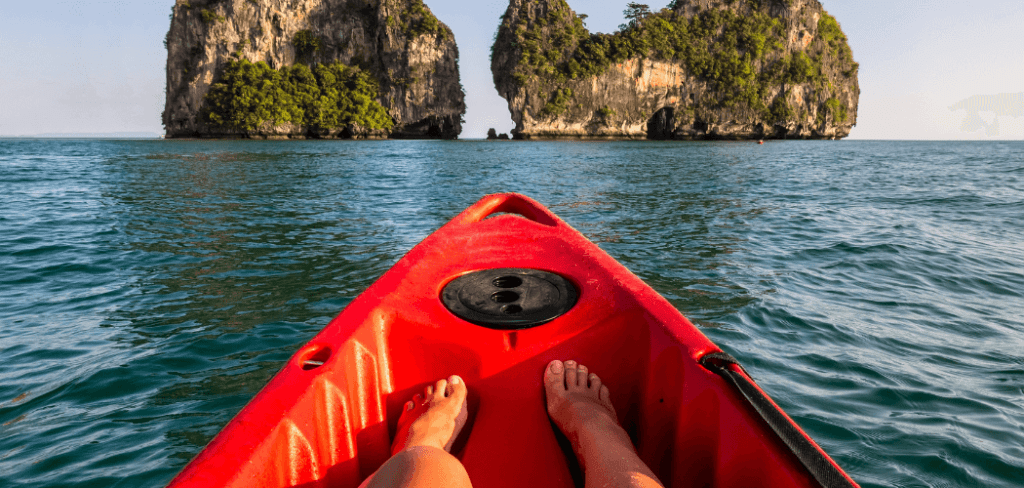Kayaking is one of the most popular water activities among outdoor enthusiasts. It is an excellent way to enjoy the natural beauty of lakes, rivers, and oceans while getting a full-body workout. That said, there are many types of kayaks to choose from, but one that is particularly beginner-friendly and versatile is the sit-on-top kayak.
Sit-on-top kayaks are easy to use, stable, and relatively safe. They are perfect for exploring calm waters, fishing, or even surfing. However, before you can start paddling away, you need to know how to get into your kayak from a dock. This may seem like a simple task, but it can be challenging for beginners or those who are not familiar with kayaking.
The purpose of this blog post is to provide a step-by-step guide on how to get into a sit-on-top kayak from a dock safely and efficiently. We will cover the necessary preparations, positioning of the kayak, techniques for getting into the kayak, and tips on safe kayaking.
So, grab your paddle and let’s get started!
Step 1: Preparing for Getting Into A Sit-On-Top Kayak From A Dock
Before you can hop into your sit-on-top kayak and hit the water, there are a few essential preparations you need to make. Here are some tips to help you prepare for getting into a sit-on-top kayak from a dock:
1. Choose the Right Kayak
Before purchasing or renting a sit-on-top kayak, make sure to choose one that is right for you. Consider factors such as your weight, height, and level of experience. A kayak that is too small or too large can affect your stability and balance, making it harder to get in and out of the kayak.
It is also important to choose a kayak with features that match your intended use, such as storage, fishing rod holders, or adjustable footrests.
2. Wear Proper Attire and Gear
Dressing appropriately for kayaking is crucial to your comfort and safety. You should wear clothing that is lightweight, comfortable, and quick-drying. Avoid cotton clothes, which can become heavy and uncomfortable when wet.
Additionally, wear a personal flotation device (PFD) at all times while kayaking. Make sure it is properly fitted and comfortable, and test it in the water before heading out.
3. Assess the Water and Weather Conditions:
Before getting into your kayak, take some time to assess the water and weather conditions. Check the water temperature, wind speed, and tides.
Avoid kayaking in extreme weather conditions, such as strong winds or thunderstorms, and always check the weather forecast before heading out. Also, be aware of any potential hazards, such as rocks, rapids, or strong currents.
By following these tips, you can ensure that you are properly prepared for getting into your sit-on-top kayak from a dock. Remember to always prioritize safety and enjoyment in your outdoor activities.
In the next section, we will cover the proper positioning of the kayak before getting in.
Related: Does Kayaking Work Your Legs?
Step 2: Positioning The Kayak
Once you have made the necessary preparations, it’s time to position your kayak before getting in. Proper positioning is key to ensuring a safe and easy entry into your sit-on-top kayak. Here are some steps to follow when positioning your kayak:
1. Secure the Kayak
Before positioning your kayak, make sure it is securely anchored to the dock or other stable structure. This will prevent the kayak from drifting away or tipping over while you are trying to get in.
2. Position the Kayak Parallel to the Dock
Position your kayak parallel to the dock, with the bow (front) of the kayak pointing away from the dock. This will allow you to easily slide into the kayak from the dock without having to climb over the sides.
3. Place the Paddle Across the Kayak
Place your paddle across the top of the kayak, behind the cockpit. This will keep the paddle within easy reach while you are getting in and out of the kayak.
4. Adjust the Footrests
Adjust the footrests inside the kayak to match your leg length. This will help you maintain balance and stability while paddling.
5. Check the Stability of the Kayak
Before getting in, check the stability of the kayak by gently rocking it back and forth. If the kayak feels unstable, adjust your weight or reposition the kayak before getting in.
Step 3: Getting Into The Kayak

Now that your kayak is properly positioned and stable, it’s time to get in! Here are some steps to follow for getting into a sit-on-top kayak from a dock:
1. Sit on the Dock
Start by sitting on the dock beside the kayak, with your feet in the water and your back facing the kayak. This will allow you to easily slide into the cockpit without having to climb over the sides of the kayak.
2. Position Yourself in the Cockpit
Slide your feet into the cockpit and position yourself so that your buttocks are centered in the seat and your legs are comfortably positioned on the footrests.
3. Hold onto the Kayak
Using your hands, hold onto the sides of the kayak or the dock to steady yourself as you lift your body into the kayak.
4. Lift Your Body Into the Kayak
Using your abdominal muscles, lift your body into the kayak in a smooth, controlled motion. Keep your weight centered and avoid leaning too far to one side or the other.
5. Bring Your Legs Into the Kayak
As you lift your body into the kayak, bring your legs into the cockpit and position them on the footrests. Make sure your knees are bent and your feet are comfortably positioned on the footrests.
6. Sit Up Straight
Once you are comfortably positioned in the kayak, sit up straight and adjust your posture as needed. This will help you maintain balance and stability while paddling.
7. Grab Your Paddle
Finally, grab your paddle from where you placed it on the kayak and get ready to hit the water!
Step 4: Consider Tips and Techniques for Safe and Efficient Kayaking
Once you are in your kayak and ready to hit the water, there are some tips and techniques you should keep in mind to ensure a safe and efficient paddling experience. Here are some key things to remember:
1. Proper Paddle Grip
One of the most important aspects of efficient kayaking is a proper paddle grip. Hold the paddle with your hands shoulder-width apart and your palms facing down. Your knuckles should be angled up and your elbows should be slightly bent.
2. Effective Paddle Stroke
To move forward, place the paddle in the water next to the kayak and pull it back towards your hip in a smooth, controlled motion. Rotate your torso as you pull the paddle back to engage your core muscles and maximize your power. Repeat on the other side to continue forward movement.
3. Keep Your Core Engaged
As mentioned above, engaging your core muscles is essential for efficient kayaking. Keep your abdominal muscles tight and your back straight to maintain proper posture and minimize strain on your lower back.
4. Avoid Overreaching
When paddling, avoid reaching too far forward with your arms. This can put strain on your shoulders and decrease your efficiency. Instead, focus on rotating your torso and engaging your core to power your strokes.
5. Watch Your Surroundings
Always be aware of your surroundings when kayaking, including other boaters, swimmers, and potential obstacles. Stay alert and adjust your course as needed to avoid collisions or other hazards.
6. Wear Proper Gear
Wearing proper gear is essential for safe kayaking. This includes a personal flotation device (PFD), appropriate clothing for the weather conditions, and any necessary accessories such as a spray skirt or helmet.
7. Practice Rescue Techniques
In case of an emergency, it’s important to know how to rescue yourself or others. Practice self-rescue techniques such as re-entering your kayak from the water and assisting others in need.
And that’s it: To get into a sit-on-top kayak from a dock, follow these steps: 1) Position the kayak perpendicular to the dock, 2) Place one hand on the kayak and the other on the dock, 3) Sit on the dock with your feet in the water and your legs on either side of the kayak, 4) Slide into the kayak while keeping your weight centered, and 5) Bring your legs into the kayak and get into a seated position.
So, next time you’re planning a kayaking adventure, keep all these tips in mind and get ready to make some unforgettable memories on the water. Happy paddling!
